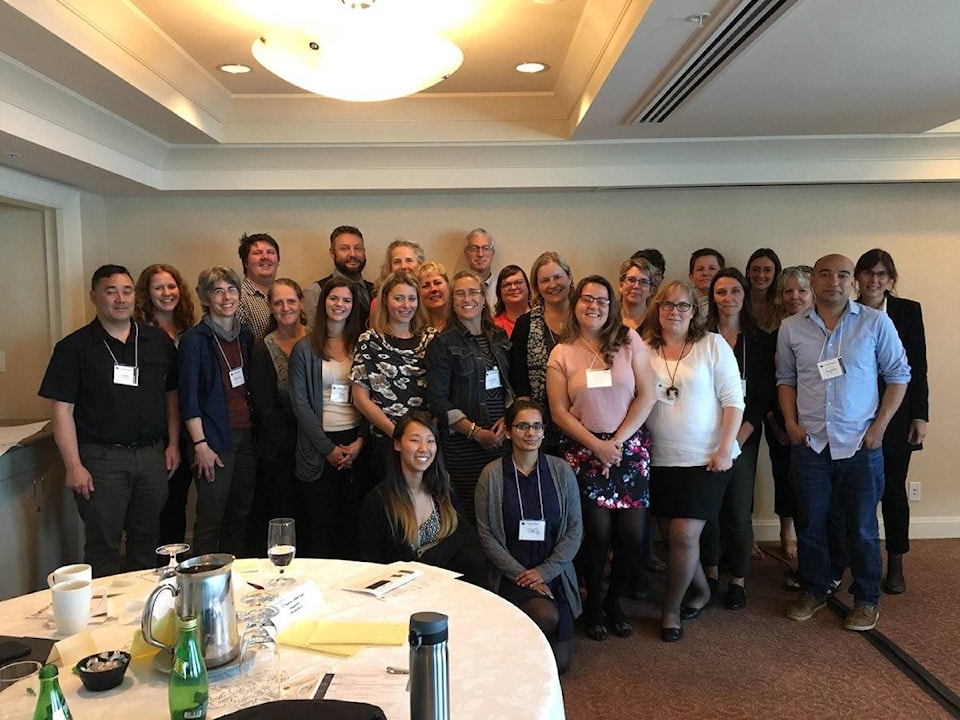Haida Gwaii is one of the few remote places left in B.C. where many women don’t have to go away to have a baby.
About 50 women have pregnancies on Haida Gwaii each year, and nearly half give birth on island.
In similarly remote parts of B.C. and Canada, that’s increasingly rare — fewer and fewer remote places continue to offer a maternity program if they don’t have the relatively expensive surgical services needed to offer Caesarean deliveries.
“We now have five in the province, and that’s down from over 20 in 2000,” says Jude Kornelsen, a sociologist and co-director at UBC’s Centre for Rural Health Research.
Kornelsen works together with Dr. Stefan Grzybowski, a physician who practiced for over 10 years on Haida Gwaii, and she recently organized a symposium that included Haida Gwaii and the other four other communities on that shrinking list: Hazelton, northern Vancouver Island, Saltspring Island, and Invermere.
“They’re all kind of on the verge of sustainability,” Kornelsen said, noting that in northern Vancouver Island, just five children were born locally last year.
“I think Haida Gwaii is doing very well because of the local advocacy.”
RELATED: First babies born in new Haida Gwaii Hospital
Celina Laursen is a registered midwife who, together with fellow midwife Shannon Greenwood, is among the local advocates Kornelsen spoke about.
Another is Kerry Laidlaw, site administrator for the south-end hospital.
“He really facilitated a lot of this happening from way back, 15 years ago, when we were told we should go off island to have our babies,” Laursen said, recalling how Laidlaw organized meetings for islands women and healthcare workers to talk about the barriers to birthing here, and encouraged her to enter midwifery after she had worked for years as a doula.
“That was a really outside-the-box way of thinking, but he knew that women were just coming into the hospital anyways,” she said.
Since then, Laursen said the midwife program has been supported by a combined effort, such as recent, supplementary funding from the First Nations Health Authority, and local teams of midwives, nurses, and doctors who train on maternity care together. Laursen said she and others have also developed close working relationships with off-island obstetricians and maternity clinics to make the transition easier for women who do need to go off island.
It all means that women with uncomplicated pregnancies are well supported if they want to have a baby here.
And while Haida Gwaii has the strongest maternity program of its kind, Laursen says there is still work to do to shore it up. At the symposium, nurses, doctors, midwifes and hospital administrators discussed various ways to do that, such as funding salaried positions for midwives who often go from helping with several pregnancies one year to very few the next.
“We still have to work on keeping it sustainable,” Laursen said. “Our numbers are low, and that affects everything, including the nursing experience, the physician experience.”
Kornelsen said research into remote maternity care shows most women want to stay in their home community to give birth, and studies show that is it safe even without local Caesarean deliveries so long as there is good access to emergency transport, screening for complicated pregnancies, and support from specialists working nearby.
Asked about the decline in maternity services such as Haida Gwaii’s, Kornelsen said partly it’s because many women feel more secure giving birth where local Cesarean deliveries are available, even if they’re unlikely to need one. Without offering Cesarean deliveries, smaller communities in Canada typically retain about a third to a half of local births, compared with 80 per cent for those that can do Cesareans.
But Kornelsen said the bigger issue is that planners aren’t giving local services enough support, even if they recognize their value.
“It’s not that we’re trying to close these services actually, it’s just that we’re not supporting them enough,” she said.
Kornelsen and others would like to see more research on the health outcomes of children born locally, which often means less stress and financial costs for families since they don’t need to arrange and pay for a long stay off-island.
“I also hear a lot about cultural costs,” Kornelsen said. “The cost of not giving birth on traditional territory, for example, for some Indigenous women is quite significant.”
One elder on the central coast told Kornelsen that with all the moms leaving to have babies, there are only deaths in the hospital — as a community, she said, there is no way to close the circle.
“Those are the kinds of questions I think we need to be mindful of from a planning perspective,” she said.
“And they’re harder to quantify.”
